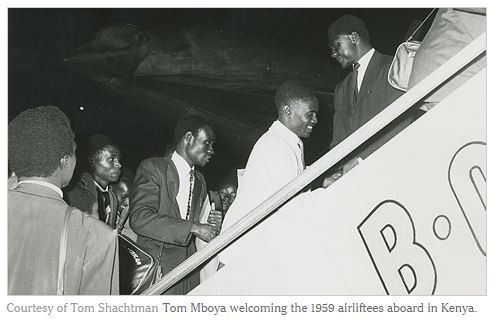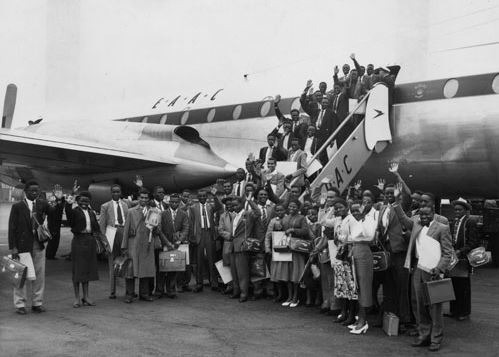In the late 1950s, as Kenya edged closer to independence, one man quietly launched a project that would shape the country’s political, social, and economic future. His name was Tom Mboya, and his vision gave birth to the Kenyan Airlift Program, also known as the Airlift Africa Project.
This initiative sent hundreds of young East Africans to the United States for higher education at a time when opportunities at home were almost nonexistent. What makes this story remarkable is not just its ambition, but the unlikely alliances and hidden struggles behind it.
Tom Mboya was already a rising political star, a trade unionist, and one of Kenya’s sharpest thinkers. He understood that political independence meant little without educated leaders who could manage a modern economy.
At the time, Makerere University in Uganda was the only significant higher learning institution available for East Africans, and it could not accommodate the demand. The colonial government offered few scholarships, and those that existed often favored loyalty to the British administration. Mboya saw a gap and decided to fill it.
In 1959, he orchestrated the first airlift of Kenyan students to America, securing support from American foundations, universities, and civil rights leaders. It was an extraordinary feat: most of the students had never been on a plane before, passports were a nightmare to obtain under colonial rule, and funding was scarce. Yet, Mboya’s charisma and determination won him allies.

Among the most surprising was then-Senator John F. Kennedy, who personally supported the program through the Kennedy Foundation. What few know is that Kennedy’s involvement was partly motivated by Cold War politics—the United States wanted to counter Soviet influence in Africa by investing in future leaders.
The students selected were not just the children of elites. Many came from modest rural families, their selection based on academic merit. This made the airlift revolutionary: it was not about grooming a privileged class, but about widening access to global education. Among the beneficiaries were future giants of African leadership, including Wangari Maathai, who later became the first African woman to win the Nobel Peace Prize. Another airlift student, Barack Obama Sr., would eventually father America’s first Black president, creating a link between Kenya’s independence struggles and U.S. political history.
There were also challenges and controversies. Some colonial officials accused Mboya of “smuggling” students out of Kenya and undermining British authority. Within Kenya, rival politicians feared the program gave Mboya too much influence over the country’s future elite. Yet, he pressed on, arguing that education was the true weapon of liberation.
An often-overlooked fact is that the Airlift was not limited to Kenya—it also included students from Uganda, Tanganyika (modern-day Tanzania), and Zanzibar. Mboya envisioned it as an East African project, planting seeds of regional integration long before the East African Community was formally created.
By the time Kenya gained independence in 1963, over 800 East African students had studied abroad through the program. They returned as doctors, teachers, lawyers, and administrators, forming the backbone of postcolonial institutions. The Airlift helped Kenya avoid the crippling shortage of skilled professionals that many other newly independent African countries faced.
The tragedy is that Tom Mboya did not live to see the full fruits of his work. He was assassinated in 1969 at the age of 39, leaving behind a legacy cut short. Yet, his Airlift students carried his dream forward, proving that investment in minds can outlast even the loss of its founder.

